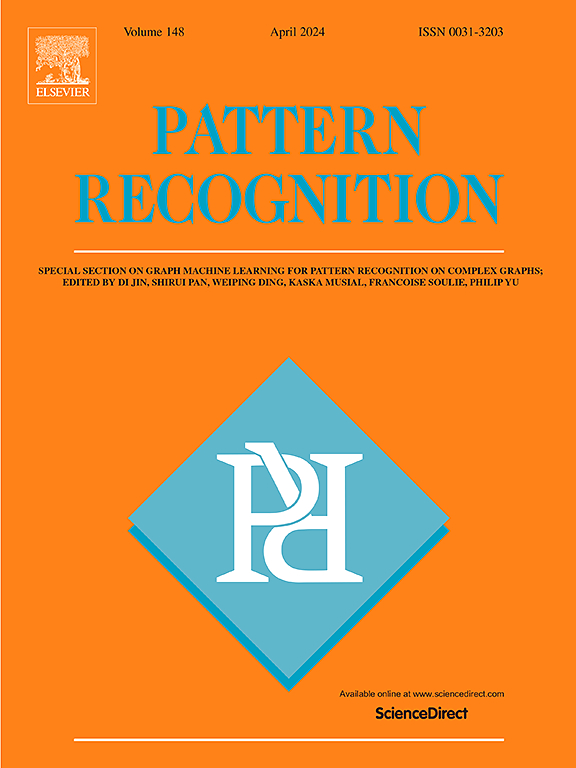基于时空重要性掩蔽和细粒度优化的神经解码图预训练框架
IF 7.5
1区 计算机科学
Q1 COMPUTER SCIENCE, ARTIFICIAL INTELLIGENCE
引用次数: 0
摘要
神经解码一直是神经科学的前沿问题,在深度学习技术的支持下,神经解码取得了重大进展。然而,这些突破都是基于大规模的全标注功能磁共振成像(fMRI)数据,这极大地阻碍了其进一步的适用性。最近,基础模型在自然语言处理、计算机视觉和多模态数据处理领域引起了相当大的关注,因为它们能够避免对大量注释数据集的需求,同时获得显著的准确性增益。然而,为基于连通性的复杂时空大脑网络量身定制有效的基础模型方法仍然是一个未解决的挑战。为了解决这些问题,在本文中,我们提出了一个通用的时间感知图自监督对比学习框架(TAGSC),用于基于fmri的神经解码。具体而言,它包括三个创新改进,以增强基于fmri的图基础模型:(i)时空增强策略考虑了空间脑区域协同和时间信息连续性,以生成大脑时空对比视图;(ii)时间感知特征提取器学习大脑时空表征,充分考虑大脑状态转换的连续一致性,提取从局部到全局的大脑时空交互信息;(iii)细粒度的一致性损失有助于从时间和空间角度进行对比优化。对公开可用的fMRI数据集的广泛评估表明,所提出的TAGSC具有优越的性能,并揭示了与大脑不同状态相关的生物标志物。据我们所知,这是最早尝试使用时空预训练模型进行神经解码的研究之一。本文章由计算机程序翻译,如有差异,请以英文原文为准。

Graph pre-trained framework with spatio-temporal importance masking and fine-grained optimizing for neural decoding
Neural decoding has always been the cutting-edge neuroscience issue, significant progress has been made in neural decoding with the support of deep learning technology. However, these breakthroughs are based on large-scale fully annotated functional magnetic resonance imaging (fMRI) data, which greatly hinders its further applicability. Recently, foundation models have garnered considerable attention in the realm of natural language processing, computer vision, and multimodal data processing due to their ability to circumvent the need for extensive annotated datasets while achieving notable accuracy gains. Nevertheless, the formulation of effective foundation model approaches tailored for connectivity-based complex spatio-temporal brain networks remains an unresolved challenge. To address these issues, in this paper, we proposed a general Temporal-Aware Graph Self-supervised Contrastive learning framework (TAGSC) for fMRI-based neural decoding. Concretely, it includes three innovative improvements to enhance fMRI-based graph foundation models: (i) a spatio-temporal augmentation strategy considers spatial brain region synergy and temporal information continuity to generate brain spatio-temporal contrastive views; (ii) a temporal-aware feature extractor learns brain spatio-temporal representations, which fully takes into account the continuous consistency of brain state transitions and fetches brain spatio-temporal interaction information from local to global; (iii) a fine-grained consistency loss assists in contrastive optimization from both temporal and spatial perspectives. Extensive evaluation on publicly available fMRI datasets demonstrated the superior performance of the proposed TAGSC and revealed biomarkers related to different states of the brain. To the best of our knowledge, it is among the earliest attempts to employ a spatio-temporal pre-trained model for neural decoding.
求助全文
通过发布文献求助,成功后即可免费获取论文全文。
去求助
来源期刊

Pattern Recognition
工程技术-工程:电子与电气
CiteScore
14.40
自引率
16.20%
发文量
683
审稿时长
5.6 months
期刊介绍:
The field of Pattern Recognition is both mature and rapidly evolving, playing a crucial role in various related fields such as computer vision, image processing, text analysis, and neural networks. It closely intersects with machine learning and is being applied in emerging areas like biometrics, bioinformatics, multimedia data analysis, and data science. The journal Pattern Recognition, established half a century ago during the early days of computer science, has since grown significantly in scope and influence.
 求助内容:
求助内容: 应助结果提醒方式:
应助结果提醒方式:


